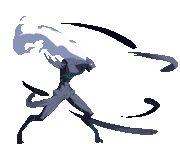|
JoeNotCharles posted:For a home computer, I wouldn't bother. The main point of separating them would be so that if one of your partitions gets corrupted, you don't lose the other one. Obviously, this has the most effect if the other partition is actually on a separate drive, which it sounds like it won't be. It is always useful to have your OS files and your personal data on a separate partition, for any OS. In the case that you want to install a different distribution, or do a clean install of a new version of your distribution, you can simply format the / partition and start clean rather than mucking around with trying to wipe out your OS files and keep your personal files safe. Anal Wink posted:Question: I'm about to install on a 700gb drive. It'll mostly be used for a media share for my xbox, but I'm also going to play around with Xen. Most installations of Linux aren't going to need more than an 8GB or so root partition. However, given that that drive is about as big as a moon of Jupiter, you probably want to be really generous with how much space you allocate to /, just so you don't run into problems later. I'd go with maybe 50GB. I would suggest keeping Xen images either in /home or in a third partition that is separate from / and /home, so that you can still safely reformat / if necessary without having to back up anything. By the way, the easiest way to solve the "how big do I make my partitions?" question is to use Linux Volume Management, which essentially allows you to resize your partitions if you need to. If you're willing to take a few minutes to read a HOWTO on LVM, that's really the way to go.
|
|
|
|

|
| # ? Apr 24, 2024 02:25 |
|
Wow, I always thought I just had a hosed up install, but it turns out Firefox has never had a "Copy Image" menu option in Linux? Is there any way to get that functionality back?
|
|
|
|
Bonus posted:Hmmm, no, still not working :\ This is a libwfb installation bug -- install it manually. See https://bugs.launchpad.net/ubuntu/+source/linux-restricted-modules-2.6.20/+bug/98641
|
|
|
|
Leathal posted:Wow, I always thought I just had a hosed up install, but it turns out Firefox has never had a "Copy Image" menu option in Linux? Then you will need a "Paste Image" menu in whatever program you intend to use that image -- it's not there, either. Save image to a file, then use that file.
|
|
|
|
I'm rebuilding my own LiveCD of Ubuntu with the help of UCK, using the standard Ubuntu LiveCD as a base for my own. In order to free up some space, I removed stuff like Gimp and OpenOffice, however, my CD Image doesn't seem to become smaller  I guess these packages must either still hide in some cache directory, or they leave their traces in the actual filesystem itself. Any ideas?
|
|
|
|
kyuss posted:I'm rebuilding my own LiveCD of Ubuntu with the help of UCK, using the standard Ubuntu LiveCD as a base for my own. No, they are huge, and I had to remove them when building custom CD with reconstructor. Of course, you have to remove all openoffice-related packages, not just openoffice package itself.
|
|
|
|
teapot posted:No, they are huge, and I had to remove them when building custom CD with reconstructor. Of course, you have to remove all openoffice-related packages, not just openoffice package itself. But when you remove them with the package manager, they should be gone from your image, leaving you with more free space, right? I'm still having trouble with the packet managing concept. How would I remove OpenOffice and Gimp with apt-get or aptitude, for example? Am I really expected to manually select every single lib / plugin / spellchecking module? And sometimes, when I choose to remove a certain package, completely unrelated stuff like "ubuntu-desktop" are automatically selected for removal, too. There must be an easier way to remove software, right?  I just want to get rid of some stuff to be able to burn my iso to a CD.
|
|
|
|
teapot posted:Then you will need a "Paste Image" menu in whatever program you intend to use that image -- it's not there, either. That's retarded, I thought X11 had a universal clipboard. In Windows I can do Copy Image in Firefox and paste it into just about any program that handles images, from Photoshop to Nero Cover Designer.
|
|
|
|
dfn_doe posted:I don't know about the rest of you, but having /home mounted on an ext2 partition seems to be about the simplest way to ensure that you can get to your data from windows and/or OSX with easily available and stable tools/drivers with little chance of corrupting your data. Other FS types do not have this same ability... yet.
|
|
|
|
Leathal posted:That's retarded, I thought X11 had a universal clipboard. In Windows I can do Copy Image in Firefox and paste it into just about any program that handles images, from Photoshop to Nero Cover Designer. Relatively recent developments in standards and higher-level toolkits are helping, but this kind of interchange hasn't traditionally been a focus for X11 apps.
|
|
|
|
covener posted:Relatively recent developments in standards and higher-level toolkits are helping, but this kind of interchange hasn't traditionally been a focus for X11 apps. That's a shame. I really miss little things like being able to drag and drop files from a zip archive to the folder I want to put them in.
|
|
|
|
Leathal posted:That's a shame. I really miss little things like being able to drag and drop files from a zip archive to the folder I want to put them in. FWIW seems to work between ark (kde archive tool, like winzip or file-roller) and konqueror (file manager/browser)
|
|
|
|
Saukkis posted:Ext3 should have the same ability. Those tools and drivers should treat it as ext2. Some tools/drivers designed for ext2 will work with ext3 but in my own personal experience they seem to be far less stable when manipulating the ext3 especially when you have done any tuning above/beyond the default settings when creating the FS, I.E. using a separate journal device.
|
|
|
|
Leathal posted:That's a shame. I really miss little things like being able to drag and drop files from a zip archive to the folder I want to put them in.
|
|
|
|
kyuss posted:But when you remove them with the package manager, they should be gone from your image, leaving you with more free space, right? You will need to at least remove all packages that have "openoffice" in their name. Or you can use deborphan or gtkorphan to find and remove packages that were installed as dependencies and are no longer needed. http://www.ubuntugeek.com/cleaning-up-all-unnecessary-junk-files-in-ubuntu.html
|
|
|
|
I've been running Fedora 7 for a few days on a workstation at work and I like it a lot. I'm tempted to try it on my desktop here and replace Ubuntu for the time being, but I'd like to do a network install. Does anyone know if the standard nForce 4 Ethernet controller is supported by the installer?
|
|
|
|
Does anyone know of any good CLI dvd compressors? I want to set up an automated thing where I pop a dvd in and it automatically starts to compress it, make the iso, then eject it. I found handbreak, but I think that just rips to divx or something.
|
|
|
|
Professor Science posted:I've been running Fedora 7 for a few days on a workstation at work and I like it a lot. I'm tempted to try it on my desktop here and replace Ubuntu for the time being, but I'd like to do a network install. Does anyone know if the standard nForce 4 Ethernet controller is supported by the installer? Yes it is.
|
|
|
|
Smackbilly posted:Yes it is. Is there a list of these somewhere? I wasn't seeing anything linked in the installation guide, which seemed like bullshit.
|
|
|
|
Professor Science posted:<3 I don't know - I just know I happened to do a net install using an nForce4 built-in NIC last week. Most NICs should work just fine under modern Linux distributions, though. Hardware compatibility isn't nearly as big a problem as it used to be.
|
|
|
|
Smackbilly posted:I don't know - I just know I happened to do a net install using an nForce4 built-in NIC last week. code:teapot fucked around with this message at 12:10 on Jun 11, 2007 |
|
|
|
Smackbilly posted:I don't know - I just know I happened to do a net install using an nForce4 built-in NIC last week.
|
|
|
|
Professor Science posted:The other reason I ask, though, is because I have some machines where I'd do this using wireless. Which doesn't seem to be supported by *anything*. I've been using wireless network cards with Linux for years 
|
|
|
|
m5 posted:I've been using wireless network cards with Linux for years Ditto. A poo poo-ton are supported.
|
|
|
|
m5 posted:I've been using wireless network cards with Linux for years
|
|
|
|
On my desktop I have some obscure chinese TP-link wireless card and on my laptop an ASUS PCMCIA card. Ubuntu automagically detected both, but I had to go through a tedious driver installation process on Windows (especially for the ASUS, I hate it when wireless cards install additional wireless management software).
|
|
|
|
Hello Iím working during my internship and Iím focusing on linux administration. While I am doing other projects the position leaves me with a lot of free time to build different things with some of the old hardware. (Pentium 3ís). Iíve built an IDS as well as written some perl scripts but Iím fresh out of ideas for a new side project. Anyone have any ideas or would like to share what theyíre working on? Thanks
|
|
|
|
Professor Science posted:Not in bootable installation media, they aren't! Well, a few are, but not many at all. I don't think my 2200 BG worked the last time I tried, for example. That's entirely dependent on the distribution you're using and what drivers are available at boot. It has nothing to do with Linux.
|
|
|
|
A while ago, 2-3 weeks or so, it was reported that AMD (ATI) would open-source their drivers. Having a x800 PRO this was great news. Have they been released yet? I'm not exactly expecting any advancements made in the next 6 months or so, but it'd be good to know for future reference.
|
|
|
|
Whats a good way to check and see what mail has been sent. I think there is a rouge script on a server at work (not my design) and its sending mail to the admin group. Since the script is broken I want to turn it off but I'm not sure where it resides.
|
|
|
|
I've got an issue with my Ubuntu (Feisty) install that is driving me insane, and I have no idea where to begin tracking it down. It seems like with every kernel update it changes it's mind about what device my /home drive is. My /home is a 160GB IDE drive which is primary slave. After the initial upgrade, it decided to change it from /dev/hdb1 (where you'd expect it to be) to /dev/sdb1. Since then, every kernel upgrade it seems like it flips from one to the other. My root and swap partitions are fine, but /home can't decide where it wants to be. Looking at my /etc/fstab, I'm thinking it might be because / and the swap partitions are referred to by UUID and not /dev/* like my home dir is. Am I on the right track here?
|
|
|
|
Twlight posted:Iím working during my internship and Iím focusing on linux administration. While I am doing other projects the position leaves me with a lot of free time to build different things with some of the old hardware. (Pentium 3ís). Iíve built an IDS as well as written some perl scripts but Iím fresh out of ideas for a new side project. Anyone have any ideas or would like to share what theyíre working on? My next project will be a linux-based multimedia server that will record stuff from TV, hold and play all my other movies, and store backups from my other PC. Setting up a VWware environment for testing purposes would be cool as well 
|
|
|
|
chizad posted:I've got an issue with my Ubuntu (Feisty) install that is driving me insane, and I have no idea where to begin tracking it down. It seems like with every kernel update it changes it's mind about what device my /home drive is. My /home is a 160GB IDE drive which is primary slave. After the initial upgrade, it decided to change it from /dev/hdb1 (where you'd expect it to be) to /dev/sdb1. Since then, every kernel upgrade it seems like it flips from one to the other. My root and swap partitions are fine, but /home can't decide where it wants to be. Looking at my /etc/fstab, I'm thinking it might be because / and the swap partitions are referred to by UUID and not /dev/* like my home dir is. So, what is the problem? Sometime during the last several kernel revisions the SATA drivers got moved around into their own sub-system and some chipsets which were running in legacy ide emulation mode got their own native mode. So, different drivers are controlling different hardware and in some cases running it in different ways. Ubuntu addresses each device by it's uuid as you've noticed, which effectively makes the changes transparent to the end user in most situations. So, why does it matter to you that the device names changed? Does it break something you are using the machine for? Or is it just an annoyance?
|
|
|
|
Marinmo posted:A while ago, 2-3 weeks or so, it was reported that AMD (ATI) would open-source their drivers. Having a x800 PRO this was great news. Have they been released yet? I'm not exactly expecting any advancements made in the next 6 months or so, but it'd be good to know for future reference.
|
|
|
|
dfn_doe posted:So, what is the problem? Sometime during the last several kernel revisions the SATA drivers got moved around into their own sub-system and some chipsets which were running in legacy ide emulation mode got their own native mode. So, different drivers are controlling different hardware and in some cases running it in different ways. Ubuntu addresses each device by it's uuid as you've noticed, which effectively makes the changes transparent to the end user in most situations. Sorry, I guess I should've made that more clear. I was going to just ask why the device names were changing, but in the middle of writing my post/doing some poking around for details I discovered UUID/dev disparity and sorta lost my train of thought. :/ The problem is that when the device name changes, my entry for /home in /etc/fstab is pointing to the wrong spot, which means that /home doesn't get automounted during boot. So when I go to log in, Gnome doesn't know where my home dir is until I log into a failsafe terminal session and edit fstab/mount the drive, then I can log out and log back in to a normal Gnome session. If it weren't for that, I'd be blissfully unaware that anything was changing. Guess I just need to change my fstab entry to point to the UUID then, right?
|
|
|
|
chizad posted:Guess I just need to change my fstab entry to point to the UUID then, right? bingo! That'd be a perfectly cromulent solution. You can figure out the UUID to disk mapping by jumping into /dev/disk/by-uuid and doing a quick "ls -l" to see where the UUID symlinks point.
|
|
|
|
Is there a way to create a pair of virtual network interfaces (of ethernet type) that act as a "pipe"? I want to have ethernet packets sent on one of them to appear on another and vice versa. The thing is I'm testing an experimental EAP method between wpa_supplicant and hostapd -> FreeRADIUS and want to save me the trouble of doing it via wireless connection, and so I can debug it all on a single machine. While it works just perfectly between two real ethernet interfaces connected by a cross cable using 'wired' driver, I obviously need either 2 interfaces on the same machine, or two machines - one for the supplicant and another for the hostapd+RADIUS. What would be nice is to do this in pure virtual way. Unfortunately, the normal loopback interface is not emulating Ethernet, so neither wpa_supplicant nor hostapd can use it. The other thing I tried was to create two dummy interfaces and bridge them together. When I set wpa_supplicant to use bridge interface, I can see the packet with tcpdump listening on either of the dummy interfaces, but I guess I just see the sent packet, hostapd on dummy0 doesn't receive anything. Also dummy interfaces are described as /dev/null of a network interface, so I guess it would be futile anyway. Is there maybe an example of a kernel module somewhere I could compile, that does what I want?
|
|
|
|
Washuu-Chan posted:Is there a way to create a pair of virtual network interfaces (of ethernet type) that act as a "pipe"? I want to have ethernet packets sent on one of them to appear on another and vice versa.
|
|
|
|
dfn_doe posted:bingo! That'd be a perfectly cromulent solution. You can figure out the UUID to disk mapping by jumping into /dev/disk/by-uuid and doing a quick "ls -l" to see where the UUID symlinks point.
|
|
|
|

|
| # ? Apr 24, 2024 02:25 |
|
Alowishus posted:Well what you want is a bridge... perhaps there's just a configuration problem with what you were doing? Your kernel does have to have bridge support compiled in or available as a module, and that module will need to be loaded. You were using 'brctl' to do the configuration, right? Bridging itself works, it's not the problem. However in my understanding it's not suitable for what I want :  To the left: bridge acts like a virtual switch and forwards Ethernet packets between two real interfaces, i.e. packets that come from the outside. Additionally you have another port (here: br0) available for use by applications. If I would bridge two dummy interfaces, no packets could possibly come out of br0 as they would have to come from dummy0 or dummy1, and everything sent to the br0 would be forwarded either to dummy0 or dummy1 and therefore into nirvana. I also see no way to add another internal "switch port" to the same bridge: brctl refuses to add already bridged interfaces or other bridges to a new bridge. To the right: what I want is that packets sent by one application (supplicant) to the interface pipe0 will come out of interface pipe1 where they can be received by another (hostapd), and vice versa. Now after some research I guess tun/tap should be suitable for this, as tap tunnel basically acts as a pipe, forwarding Ethernet packets between network interface tap0 and character device /dev/net/tap0. I think if I setup two tap interfaces and somehow take care of data being pumped between /dev/net/tap0 and /dev/net/tap1 it should work. But now I get another problem : I load tun module modprobe tun. When I try to create a tap interface with tunctl, I get the network interface tap0, but there's no device in /dev/net/tap0 or anywhere else. Finally, in /var/log/messages, I found following error : "rename_netif: error changing netif name tap0 to netlink/tap0: Invalid argument", there's also an empty file /dev/.udev/failed/class@net@tap0 , something wrong with udev? Washuu-Chan fucked around with this message at 15:19 on Jun 12, 2007 |
|
|





















